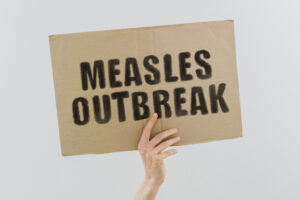FDA’s recently released 2014-2015 Retail Meat Interim Report has some good news for the industry. As focused on antimicrobial resistance in Salmonella isolated from raw retail meat and poultry, the data, collected through the National Antimicrobial Resistance Monitoring System (NARMS), is showing encouraging improvement in many important categories, continuing the trend found in 2011. This is particularly meaningful given the significant reduction in detected resistance to important antibiotics (i.e., ceftriaxone, azithromycin) and fluoroquinolones (i.e., ciprofloxacin). Additionally, the report includes Whole Genome Sequencing (WGS) data for the first time. Regarding Salmonella resistance, the data shows: The prevalence of Salmonella in retail poultry is at its lowest level since testing began in 2002. In ground turkey, it declined from a high of 19% in 2008 to 6% in 2014. In retail chicken, it dropped from 15% to 9%. Salmonella resistance to the ceftriaxone from chicken sources continued to decline steadily from a high of 38% in retail chicken meats in 2009 to 18% in 2014, and 5% during the first half of 2015. Ground turkey isolates showed an 80% decline since 2011, with ceftriaxone resistance detected in only 7% of 2014 isolates and 4% of 2015 isolates collected through June, a resistance peak of 22% in 2011. Ciprofloxacin resistance was absent in Salmonella from poultry and beef, although a single isolate was found in pork. No Salmonella from retail meats was resistant azithromycin. Multidrug resistance in Salmonella continued to show a downward drift in chicken (from 45 to 20%) and turkey (50% to 36%) from 2011 to June 2015. Salmonella remained largely susceptible to ciprofloxacin and other first line human clinical therapies, including azithromycin, during 2014 and the first half of 2015. The WGS data includes a listing of the antimicrobial resistance genes and resistance-associated mutations for Salmonella. As an inexpensive and rapid tool for characterizing bacteria; WGS provide data that can be used to predict antimicrobial resistance for a number of bacteria, including Salmonella, Campylobacter, and E. coli, and to reveal the range of genes causing resistance to a particular antibiotic. Use of WGS helped identify antibiotic-resistant genes in the form of diverse quinolone resistance mechanisms, with the identification of plasmid-associated resistance genes of particular concern because of the potential for transmissibility to other strains of Salmonella. This appears to be the first report of these genes being present in retail meat Salmonella isolated in the U.S. Additionally, the WGS data has allowed FDA, for the first time, to understand the mechanisms underlying each of the resistance phenotypes observed, and how they differ by source. Despite these positive aspects, there were also some findings of concern, including Identification of the first instance of ciprofloxacin resistance in an isolate from retail pork and its associated genes. WGS identified a blaCTX-M-65 ESBL in a single isolate of Salmonella from a U.S. retail meat sample for the first time. Studies are ongoing to see if this finding points to a broader distribution in Salmonella from other sources. While only three isolates of Salmonella serotype Dublin were recovered from meats (ground beef) in 2014, they showed resistance to 9 to 12 of 14 drugs tested. NARMS was established in 1996 as a partnership between the FDA, CDC and USDA to track antibiotic resistance in foodborne bacteria for drugs that are considered important in human medicine. The data assists FDA in its decisions on the approval of antimicrobial drugs for animals. NARMS retail meat arm collects samples of grocery store chicken, ground turkey, ground beef and pork chops, and tests for non-typhoidal Salmonella, Campylobacter, Escherichia coliand Enterococcus, to determine whether such bacteria are resistant to various antibiotics used in human and veterinary medicine. Information collected includes serotype distribution, prevalence by food source and state, selected resistance patterns, and a list of all the identified antimicrobial resistance genes. FDA has published the report’s isolate-level data, including links to the WGS data, on its site. Additionally, to provide data in a timelier manner, the agency intends to issue retail meat interim reports twice per year. Antibiotic resistance continues to be a major concern all around. While many put all the blame on agriculture, my view is that the blame, if that is even the right word, needs to be spread all around. There is way too much antibiotic usage in humans as well as in animals. This is especially true in certain developing countries where many potent antibiotics are available over the counter. Clearly, the NARMS program provides a lot of insight into current trends in the U.S., but we need to constantly keep antibiotic usage in mind – as both food safety professionals and as responsible members of the human race. About The Acheson Group (TAG) Led by Former FDA Associate Commissioner for Foods Dr. David Acheson, TAG is a food safety consulting group that provides guidance and expertise worldwide for companies throughout the food supply chain. With in-depth industry knowledge combined with real-world experience, TAG’s team of food safety experts help companies more effectively mitigate risk, improve operational efficiencies, and ensure regulatory and standards compliance. www.AchesonGroup.com





